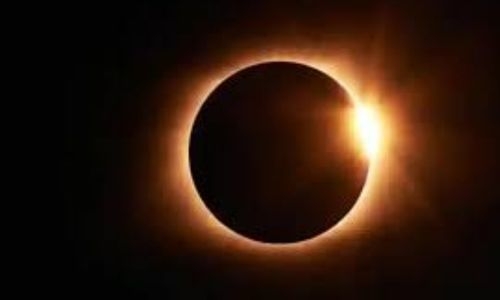Bahrain to witness partial solar eclipse on Tuesday
As Bahrain is all set to witness a partial solar eclipse, Astronomer Ali Al-Hajari has warned eclipse watchers here to take extreme caution while observing the celestial phenomenon.
“Watching the eclipse with naked eyes or through sunglasses can cause severe harm to the retina,” says Al-Hajari.
A safe technique to observe the solar eclipse is either by using a proper filter like aluminized Mylar, black polymer, welding glass of shade number 14 or by making a projection of the Sun’s image on a white board by telescope.
He added: “Welding glasses with shade levels between 11 and 14 are capable of protecting the eyes of eclipse watchers.”
Anything lower than this rating is unsuitable for looking at the Sun.
Reports worldwide also point out that it is not advisable to watch the eclipsed Sun with the naked eye, even for a short time.
It will cause permanent damage to the eyes leading to blindness even when the Moon covers most of the Sun.
Remember that viewing an eclipse is not worth damaging your eyesight.
A solar eclipse occurs on a new moon day.
It happens when the Moon comes between the Earth and the Sun and when all of them are aligned.
A partial solar eclipse will occur when the lunar disk covers the solar disk partially.
Al-Hajari further called on eclipse watchers to participate in an astronomical event in the parking lot of Isa Town Secondary School for Boys overlooking Al Quds Street next Tuesday.
The event opens at 1 pm and continues until 4 in the afternoon. Participants will get glasses to watch the eclipse.
Arrangements are also in place to observe the eclipse with an 8-inch astronomical telescope fitted with a solar filter.
In Bahrain, people could watch the eclipse for about 2 hours and 18 minutes, he said, adding that the percentage of the obscuration of the Sun by the Moon will be the same across all areas of the Kingdom.
“It ranges between less than 39% in Muharraq and northern Bahrain to more than 38% in the far south, except for the far north of Diyar.
Muharraq will have a veiling rate of 39.08%, which is the best and largest for Bahrain, and the smallest veiling rate (37.73%) will be in the southernmost part of Hawar Island.”
According to time and dates.com, the partial eclipse begins in Manama at around 1:32pm when the Moon touches the Sun’s edge at an altitude of 40.2 degree and 223 degree in direction.
The eclipse will reach its maximum by 2:44 pm and end by 3:50 pm, when the Moon leaves the Sun’s edge. There are no locations on Earth where one could watch a wholly Sun during this event.
The current eclipse is also the second partial eclipse of 2022. It is visible from most of Europe, northern Africa, the Middle East, and western parts of Asia.
Related Posts


